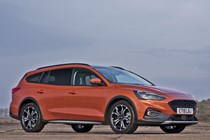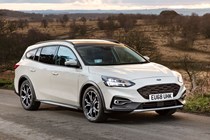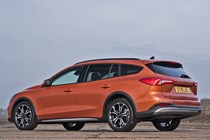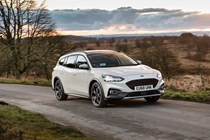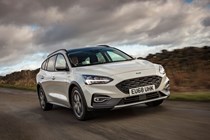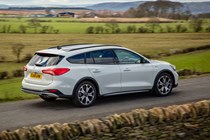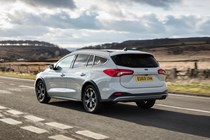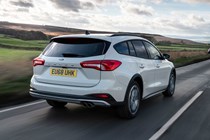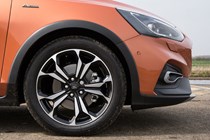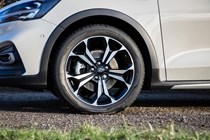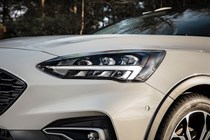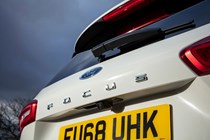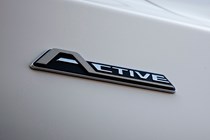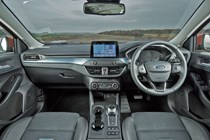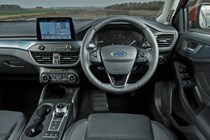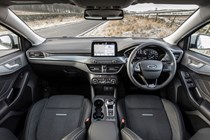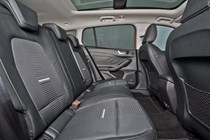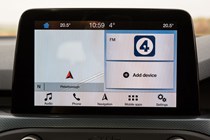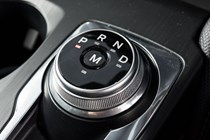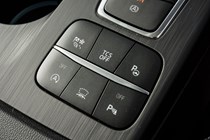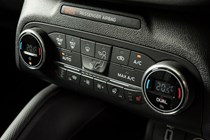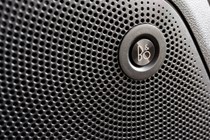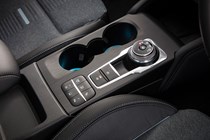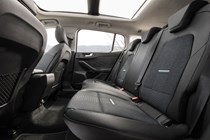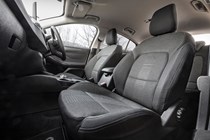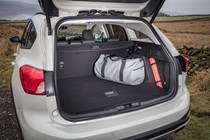Ford Focus Active Estate engines, drive and performance
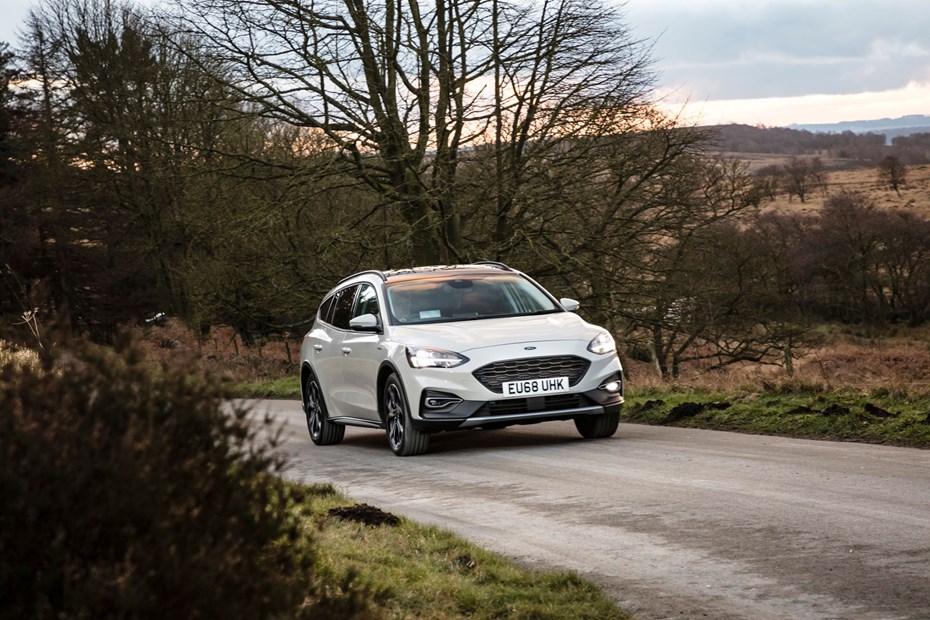
- Two petrols and two diesels available
- A choice of gearboxes for all of them
- Performance is adequate on all
A slightly reduced range makes up the Focus Active Estate’s engine line-up, offering two petrols and two diesels, with similar power outputs for each. Plus, there’s a choice of manual or automatic transmissions for each of them as well.
Petrol engines
There’s a choice of two EcoBoost petrols in the Active – a 1.0-litre and a 1.5-litre. The 1.0 unit is a three-cylinder setup, producing 125hp and 170Nm of torque. Well suited to smaller cars – we particularly like how well it works in the Fiesta – it seems like it would be too small for a high-rise family estate like the Focus Active. In fact, it’s surprisingly capable as long as you don’t want to carry large, heavy loads, tow or drive like a boy racer. It’s far from the slowest car you’ll buy new, either, taking 10.3 seconds to get from 0-62mph in the manual. The automatic takes 11.3 seconds, but with eight speeds makes the most of the small engine overall.
Providing extra power and torque is the 1.5-litre, with 150hp and 240Nm. Paired with the precise, sweet-shifting manual it’s an enjoyable car to drive, and it’s got the character of a much larger engine at times – though fully laden, and on longer motorway inclines, you’ll still get to use the gearbox. Choose the automatic, and it’s a really smooth combination. Performance is adequate, rather than sporty, with a 0-62mph time of 9.1 seconds and 9.7 seconds for manual and auto respectively.

Diesel engine
Retaining the more conventional four-cylinder layout, the diesel engines in the Focus are nevertheless brand-new designs. At the entry level is the 1.5-litre, 120hp EcoBlue, that offers considerably more torque – 300Nm – than the 125hp petrol. Despite being the slowest option in terms of 0-62mph, with times of 10.8 seconds and 10.7 seconds for the manual and auto, in-gear performance is stronger and it’s the better option for sustained motorway driving.
If you want 150hp and diesel, then you’ve got the 2.0-litre EcoBlue. 370Nm of torque, plus the fact that this is the least-stressed version of the ‘Panther’ engine (it produces up to 213hp in other Fords) means it’s the one to go for if you do high mileages. The 0-62mph sprint is on par with the 1.5 EcoBoost petrol, at 9.1 seconds (manual) or 9.3 seconds (automatic.
What’s it like to drive?
- Comfortable, yet precise and intuitive steering
- Predictable and safe, even fun, despite more roll
- Comfortable ride is worth it
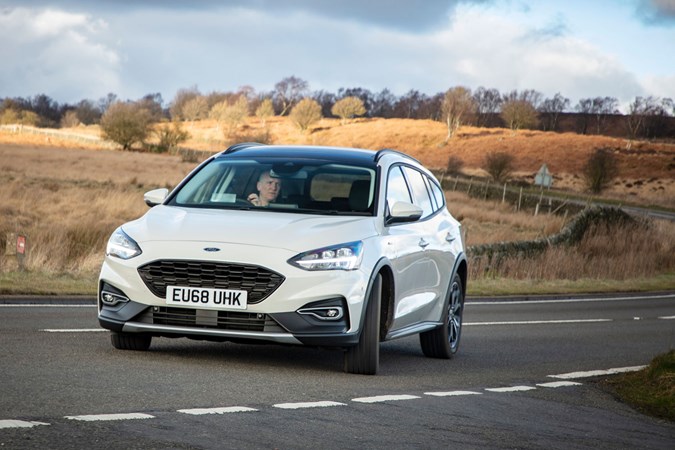
Everyone aspires to be a racing driver – or at least, that’s what you’d think given the setup of most family hatchbacks currently on sale. Ford’s approach with the Focus Active is to increase height and add fatter tyres, more able to absorb drain covers and potholes, and it’s a long way from the pseudo-sporty feel of the ST-Line.
None of these changes have ruined the highly capable Focus chassis – in fact, they’ve made it easier to live with, by very effectively reducing harshness in town, and adding a bit of compliance that means mid-corner ruts and potholes don’t shock you off the chosen line. All of the engineering sophistication that ensured the Focus earned a reputation as a satisfying drivers’ car is intact, right down to the multi-link suspension that all versions of the Focus Estate get; hatchbacks only benefit with the most powerful engine options.
Working in harmony with easily-judged brakes and precise, but not twitchy, steering, the whole package makes the Ford Focus Active Estate one of the most satisfying versions to drive in almost every situation. It’s considerably nicer and more confidence inspiring than the majority of similarly-priced crossovers and baby SUVs, too.

Off-road, the Focus Active’s additional drive modes add some more sophistication to the traction control, to cope with slippery or loose surfaces, but ultimately it’s a front-wheel drive car on road tyres. The extra clearance is welcome for unfinished driveways, parking in fields for events and being the first out in fresh snow, though; on winter tyres, this should be more than enough to keep you moving in Britain.
The 1.5-litre EcoBlue diesel, with the eight-speed automatic gearbox, is a willing engine that benefits from the sophisticated transmission, making the most of its torque in town, but suitably calmed for sustained motorway speeds. Choose the manual transmission and you’ll get to enjoy how any of the engines delivers power, thanks to the precise, smooth shift – but the auto does make the most efficient package, and it’s got a manual mode, with paddle shifts, if you want to take control.


